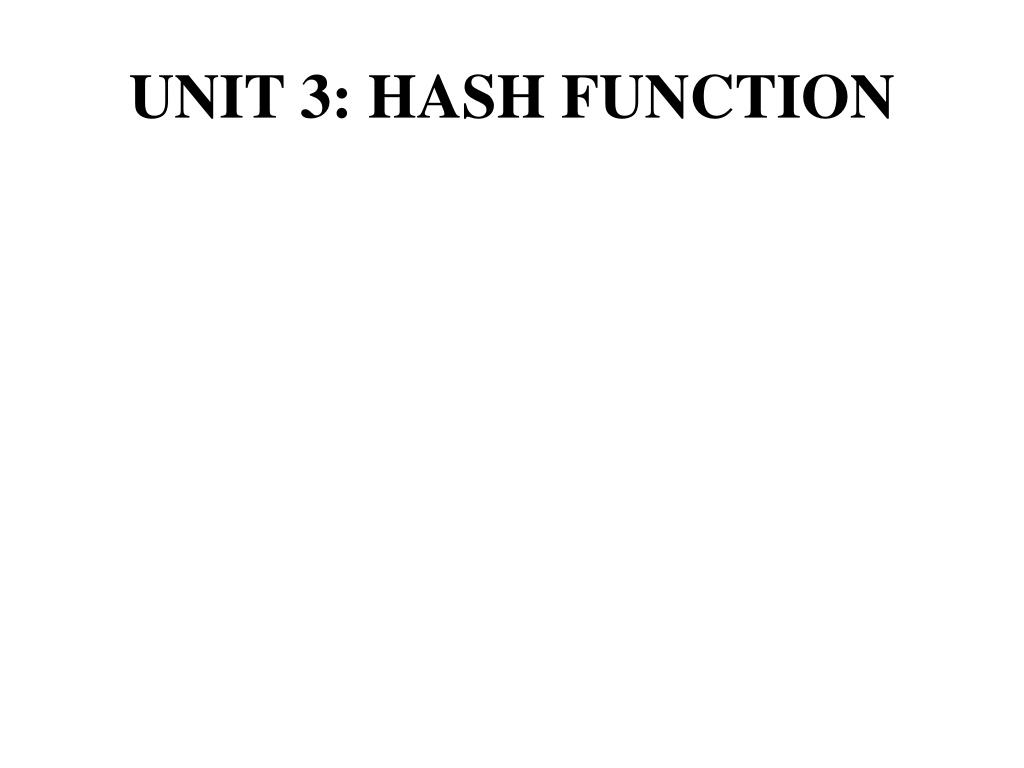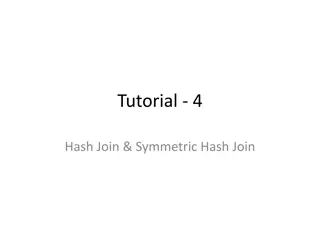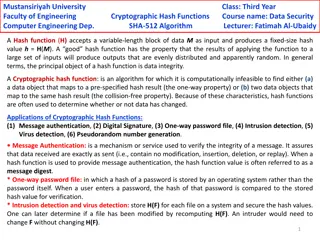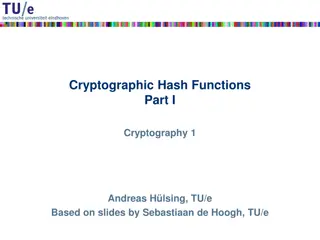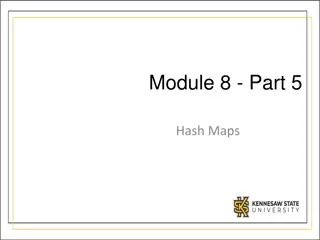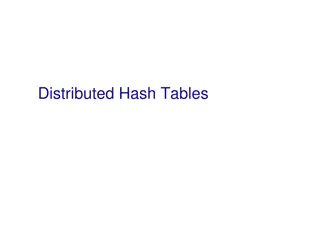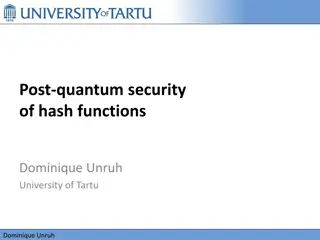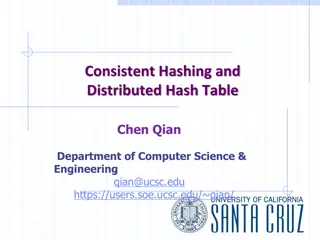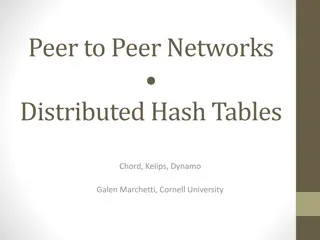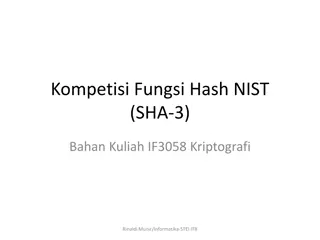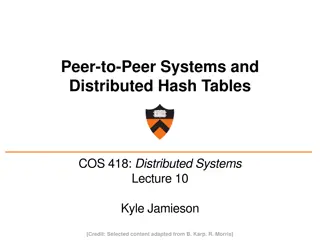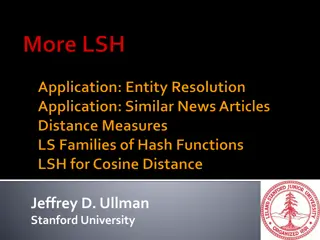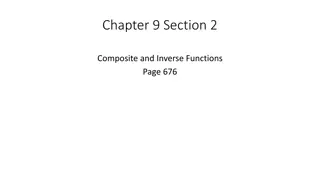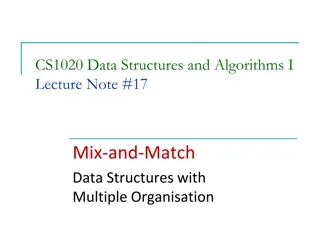Understanding Hash Functions in Data Structures
Hash functions are crucial in storing data efficiently by converting a sized amount of data into a single integer. They are used to generate hash values, hash codes, or hash sums, which serve as indexes in arrays. The hash function should be quick to compute and distribute hash addresses uniformly to minimize collisions. Techniques like division, mid-square, and folding are commonly used for hashing methods. Division method involves choosing a prime number larger than the key count, while mid-square and folding methods manipulate the key for hashing.
Download Presentation

Please find below an Image/Link to download the presentation.
The content on the website is provided AS IS for your information and personal use only. It may not be sold, licensed, or shared on other websites without obtaining consent from the author. Download presentation by click this link. If you encounter any issues during the download, it is possible that the publisher has removed the file from their server.
E N D
Presentation Transcript
sized amout of data into small datum usually a single integer that may serve as an index to an array. The value returns by hash function are called Hash value, Hash Codes, Hash sums or simply Hashes.
The function H = KL is called a hash function.
The two principal criteria used for selecting a hash functions H = K L are as follows:
The hash function H should be very easy and quick to compute.
possible, uniformly distribute the hash addresses throughout the set L so that there are minimum number of collision.
Choose a number m larger than the number n of keys in K (the number m is usually chosen to be a prime number or a number without small division, since these frequently minimizes the number of collision). Then the hash function H is denoted by;
the remainder when k is divided by m while the second formular is used when we want the hash address to range from 1 to m rather than from 0 to m-1.
primary key in the companys employee file. Suppose L consist of 100 two-digit addresses 00, 01, 02, , 99. Applying the hash function to each of the following employee numbers: 3205, 7148, 2345.
Using division method, choose a prime number in which is close to 99 such as m = 97. Then
H(3205) = 3205(mod97) = 3205/97 = 4 H(3205) = 4
That is, dividing 3205 by 97 gives a remainder of 4.
H(7148) = 7148(mod97) = 7148/97 = 67 H(7148) = 64
That is, dividing 7148 by 97 gives a remainder of 64.
H(2345) = 2345(mod97) = 2345/97 = 17 H(2345) = 17
That is, dividing 2345 by 97 gives a remainder of 17.
The key k is square. Then the hash function H is defined by
where l is obtained by deleting digits from both ends of k2. Note that the same position of k2must be used for all of the keys.
The following calculations are performed:
k 3205 7148 2345 51093904 72 93 99 K 10272025 05499025 H(k)
Observe that the fourth and fifth digits, counting from the right, are chosen for the hash address .
1, , except possibly the last, has the same number of digits as the required address. Then the parts are added together, ignoring the last carry. That is,
are ignored. Sometimes, for extra milling , the even-numbered parts k2, k4, ,are each reversed before the addition.
Chopping the key k into two parts and adding yields of the following hash addresses:
